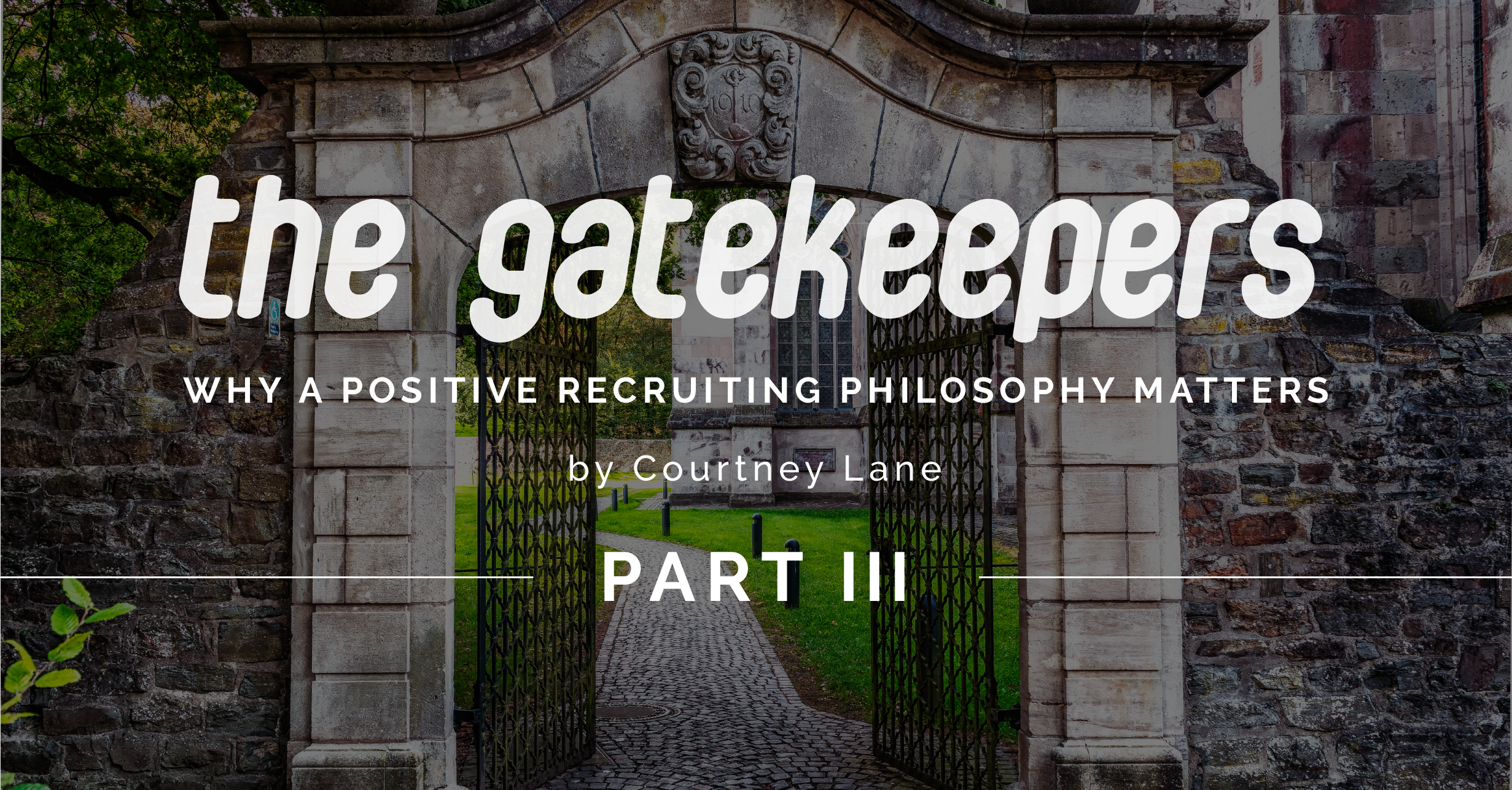
In the final blog of my Gatekeeper series, I want to tackle one of the toughest barriers in shifting your recruitment model to a Gatekeeper approach: hiring leaders and executives.
If you’ve read the first two parts of my series, you may think the Gatekeeper approach looks great on paper, but gaining organizational buy-in seems implausible. (And if you haven’t read the first or second installment in my series, I encourage you to pause and read those now)
Let’s take a step back and reflect for a moment. You’re likely a recruiting or HR leader that’s trying to find a solution for your company’s struggling recruiting efforts. Your team is doing everything they can, yet leaders across the company continue to grumble about recruiting. You hope there’s a better way to recruit out there. Rest assured, there is a light at the end of the recruiting tunnel.
Creating change is not an easy task, particularly when the results aren’t instantly visible. I get it – I do! The Gatekeeper approach will not increase the quality of hires overnight, which is a tough sell for leaders who have critical, immediate hiring needs, but it will have rewarding outcomes in the long term.
My consulting work includes in-depth interviews where I meet with hiring leaders and executives across the company to understand their experience and perspective of current recruiting processes. And guess what? While problems vary from company to company (and even from leader to leader), there is one thing that remains true across the board: the organization needs and wants recruitment to be successful.
So where does pushback come from? Pushback comes from individuals not being properly engaged or prepared for change to happen. It’s human nature to be hesitant toward things they don’t understand the value of. The Gatekeeper approach will take a level of educating the c-suite, which is the key to making change happen.

Creating buy-in at the leadership level requires a thoughtful approach. You must know your leaders, understand their concerns, and value their perspectives. Attempting to roll out changes because “HR said so” is doomed to fail. Instead, be prepared to connect the dots for your leaders.
When creating your communication plan for change, remember, people shudder at the hint of extra work to already busy days. An important piece of the Gatekeeper approach is to communicate that change requires no work for hiring leaders, just trust.
You want to prepare hiring leaders to experience a change in how recruiters support them. In fact, the sooner the recruiters are allowed to be the experts and have greater ownership in the recruiting processes, the sooner leaders will likely feel they have to put in less effort.

Quick tip: Ensure there will be no extra work when implementing the Gatekeeper approach in your first engagement with your leaders and repeat it frequently.
For some leaders, this transition will be easy. However, be ready for the hiring leaders that will challenge this process. These challengers tend to be territorial over the recruiting process. They will circumvent established processes, exclude the recruiter from crucial conversations, and react negatively to attempts by the recruiter to influence them. These types of leaders require patience, determination, and probably some ego-stroking.
For executives, this approach is about resetting mindsets of what hiring success means. Success should no longer be about quickly closing jobs. Instead, they should focus on recruiting which leads to better retention, engagement, and talent that will drive better business outcomes.

The Gatekeeper approach sets an expectation that recruiters will be an active part of improving the organization. They’ll be accountable for having deeper industry and internal business acumen, allowing them to better identify the right talent and add greater value to hiring leaders and the company.
The Gatekeeper approach is a win-win system, with buy-in and commitment from all involved. The benefits of taking such an approach supports an effective process, leading to more quality hires. Imagine not dreading a report out on recruitment efforts, and instead, looking forward to sharing recruitment successes – and being in synch with hiring leaders! It may seem like a purple squirrel scenario, but that place does exist and the Gatekeeper approach can help make it happen.
<< Click here for part 1 | Click here for part 2 >>



